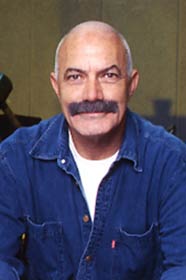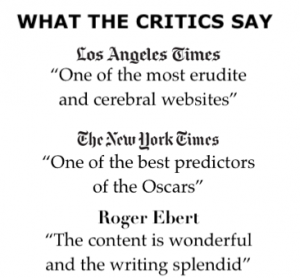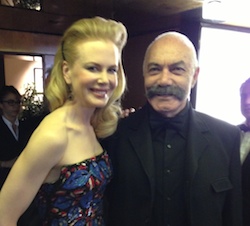Bi Gan dissects Resurrection, his Mesmerizing Ode to Cinema’s Wonders and Enigmas–Most Original and Hypnotic Film at 2025 Cannes Film Fest!
The director’s stunning new feature, starring Jackson Yee and Shu Qi, won a special honor at the Cannes Film Fest and will be released in U.S. and Chinese theaters later this year.
Since his debut with Kaili Blues (2015), which announced his distinctive voice, the director, who’s only 35, has carved out a reputation for visual innovation and narrative ambiguity.
With his acclaimed sophomore feature, Long Day’s Journey Into Night (2018), he deepened his exploration of memory and longing, employing hour-long, single-take shot in 3D that astonished audiences with its dreamlike nature.
At Cannes Film Festival, Bi returned with Resurrection, his most conceptually ambitious film to date.
Structured around six chapters, each dedicated to one sense — vision, sound, taste, smell, touch and mind — the film is sensory odyssey and meditation on cinema itself.
Starring Jackson Yee and Shu Qi, Resurrection tells the story of a spectral entity known as the Phantasm, journeying across time through various cinematic styles, from silent to film noir to the present, with poignant visual metaphors.
Reflecting on the seventh art’s past, present and future, Bi Gan has crafted a time-tripping, genre-jumping paean to the big screen in which he revives the films he loves and then buries them a second time over.
Creative origins of this project?
The inspiration came to me after I finished Long Day’s Journey Into Night. I’ve always been interested in the notion of human destiny, and that curiosity evolved into the creation of the Phantasm, the monster in this movie.
Development process?
I write everywhere. I spend time in different cities, but mainly Beijing and Guangzhou. I do write in images. When I came up with the structure, I divided it into six chapters, each representing one sense.
The six chapters span from early 20th century to today, and each reflects a cinematic style from its time.
When I wrote the first chapter, I envisioned a silent movie. The core is about a cinema monster, a Phantasm, that journeys through time.
Each chapter is centered on a different sense — vision, sound, taste, smell, touch, and mind — and each is filmed in a style that matches a cinematic era.
The second is film noir; the third shows the monster’s transformation; the fourth tells specific story, and the fifth is about the end of the world.
The first chapter is silent and about sight, the second is about sound, and so on.
As the Phantasm loses each sense, it moves closer to disappearing from the world.
In the beginning, I didn’t think of the Phantasm as a cinema monster, but as I developed the story, I realized it had to be one. Its journey through different film styles made that inevitable.

Long takes and hypnotic camera movement
I didn’t plan to use long takes, but in the chapter about touch, I returned to them — it felt more natural, and the filming process went smoother.
But ach chapter uses different visual style suited to the cinematic era it reflects, so there are many formal styles.
Cinema that resists clear interpretation
There’s no specific interpretation for my films. That’s why I find interviews so difficult. I don’t know what more I can add to make the film clearer.
When Kaili Blues came out in 2015, I used to make jokes about my films during interviews — but I was just misleading people. Ten years later, I feel the movie should speak for itself. I want to give audiences a pathway, hopefully one they enjoy.
The world is broken, life is short, but there’s also wonder in fleeting sensory experience and mystery of existence
Favorite film chapter?
I like all of them because they exist in sequence — they’re interconnected. In the last chapter, the actress performs ritual for the Phantasm. It’s similar to traditional funeral rite in China. That chapter is about the mind, and by that point, the Phantasm has lost all its other senses. I kept wondering what the Phantasm would become. Ultimately, it had to return to its original form–as monster.

Setting the closing chapter: mind
The theater is built from wax, and wax is important motif in the film. Even in silent film chapter, the boards were made of wax. I originally wanted the last chapter to be sci-fi, but that didn’t feel right. I chose a simpler, purer form. It’s closer to how I write poetry — intuitively. The Phantasm is like burning candle, so wax felt like the right material. I didn’t want to construct logical universe. I wanted the audience, especially after five chapters, to just feel the last one.
Where each segment was shot
The film was shot in Chongqing. It resembles my hometown of Kaili, but it offers more options, looks and possibilities. Many of the locations were found.
Resurrection spans from the early 20th century to today. The chapter about touch — the fifth one — was shot at a port. I chose that location because it was shattered and chaotic, and the nearby train station added to the atmosphere. It was ideal for a long take.
It’s been 7 years since Long Day’s Journey Into Night
After Long Day’s Journey, I took a break. I started writing Resurrection quickly, and initially, it was going to be realistic story. But it evolved over time. My creative process hasn’t changed much, but the world has. And that made me feel like I had to finally make this film now. I hoped it could bring some comfort to the audience.
Offering comfort?
It’s a simple desire. I want to offer comfort.












